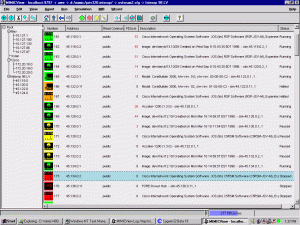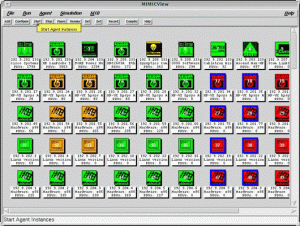Testing remote connectivity options is generally more demanding than testing a LAN (Local Area Network). Remote connectivity commonly involves the utilization of transmission devices that aren’t owned or supervised by the client. These devices are usually not accessible to the network manager for testing purposes. As a result, the network tester should find ways to check the projected network plan without having access to the real transmission devices.
The testers can make use of the following techniques to check remote connectivity designs:
• Prototype testing employing simulated links
• Pilot testing in the real environment
Network simulation software:
Computer applications provide the designer several tools ahead of implementing on real devices. The advantages of employing this approach are:
• Lower price – prototyping networks is costly to setup and maintain. Networking device configuration options change regularly. Thus, maintaining a test setting up-to-date can be demanding.
• Flexibility – simulation software can support many different types of devices and connectivity options. Altering configurations and topologies are usually much quicker and simpler in a simulation environment.
• Scalability –setting up a large or important network in a lab setting is expensive and inefficient.
• Control – the simulation application enables the network manager to control the entire network operation easily like a real network.
Regrettably, some simulation software have a few drawbacks:
• Limited functionality – simulation software can become out-of-date quickly if not kept up to date. Furthermore, the software may not support all the capabilities of the real devices.
• Impractical performance – it isn’t simple for the software developers to simulate all the conditions that can take place in an actual network without customizing the simulations.
In spite of the above drawbacks, employing SNMP simulation software to check the networks is a wonderful way to find out design errors.
Simulating a DSL or Cable Connection:
 An Ethernet link can be employed to simulate a cable wide area network connection or DSL. The routers can be linked with an Ethernet intersect cable. Routing protocol metrics can be configured to replicate the metrics of a low-speed connection by employing the bandwidth command on the interface. Static route alternatives can be configured manually by adjusting the administrative distance dispensed to the network path. This is something that one can do easily on the entire Cisco routers.
An Ethernet link can be employed to simulate a cable wide area network connection or DSL. The routers can be linked with an Ethernet intersect cable. Routing protocol metrics can be configured to replicate the metrics of a low-speed connection by employing the bandwidth command on the interface. Static route alternatives can be configured manually by adjusting the administrative distance dispensed to the network path. This is something that one can do easily on the entire Cisco routers.






0 comments:
Post a Comment